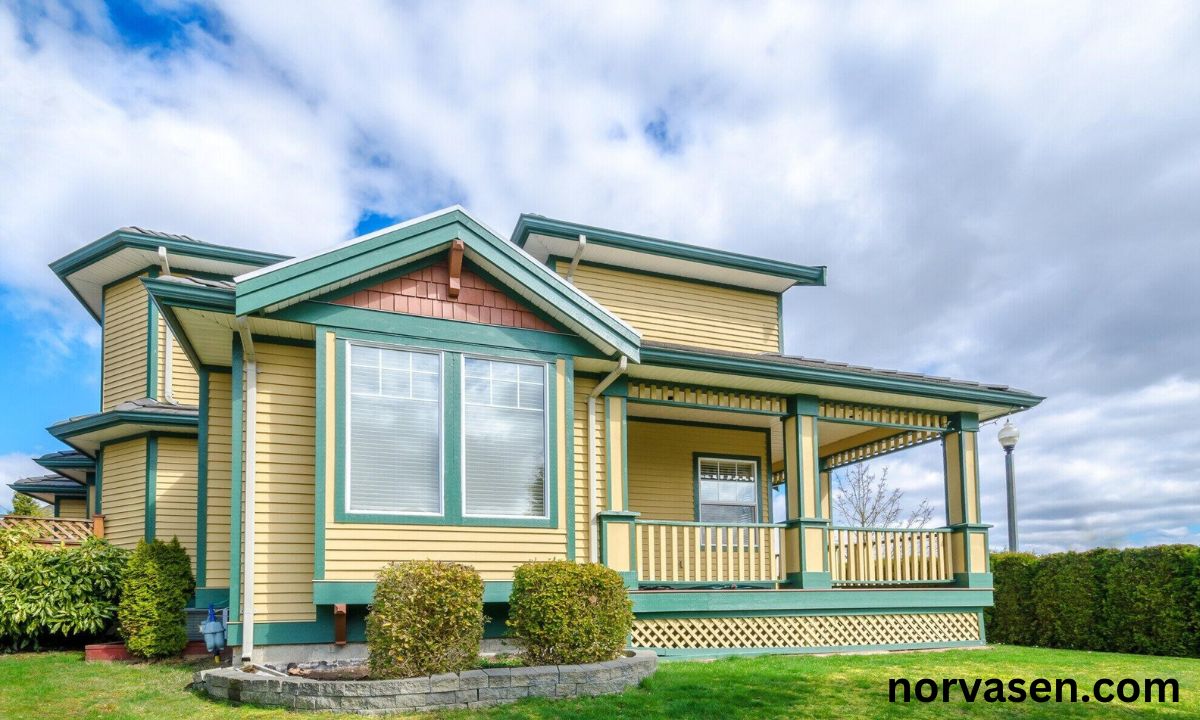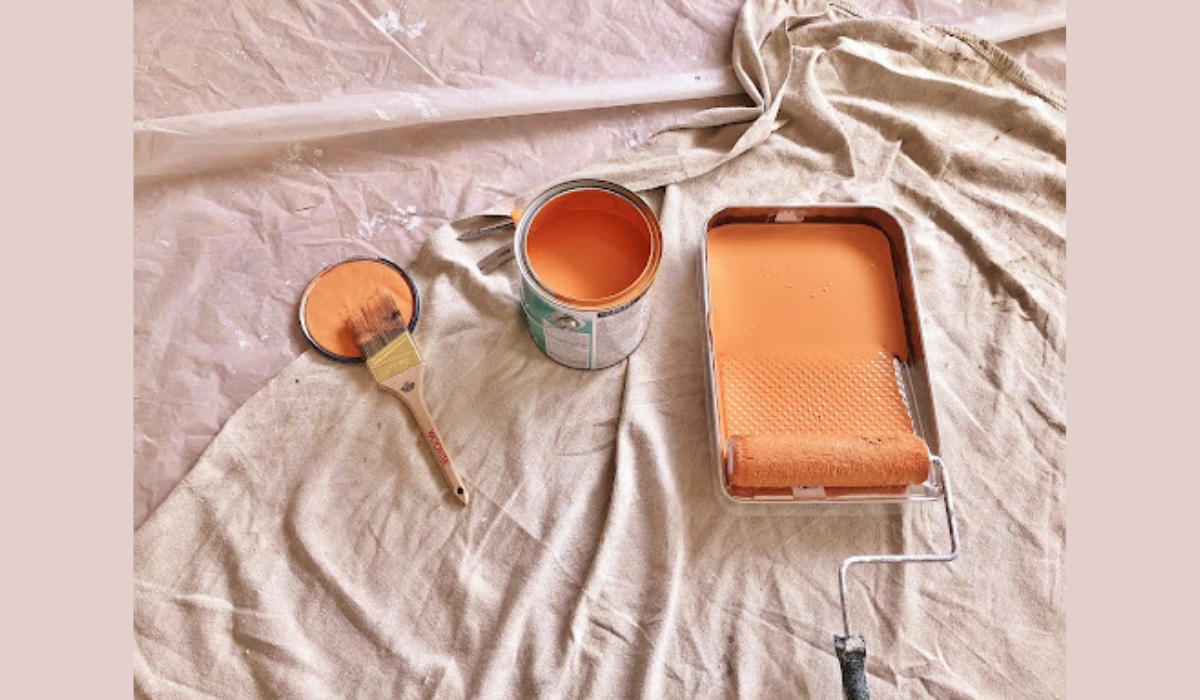Home Improvement
Foundation Maintenance: A Complete Guide to Home Exterior Repair

Maintaining the foundation of your home is critical for ensuring its longevity and structural integrity. Regular upkeep and timely repairs can prevent minor issues from escalating into significant problems
This comprehensive guide will walk you through everything you need to know about home exterior repair, focusing particularly on foundation maintenance.
Whether you’re dealing with minor cracks or major structural issues, understanding the basics of foundation repair can save you time, money, and stress in the long run.
Identifying Foundation Problems
Before diving into home exterior repair methods, it’s essential to know how to identify foundation problems. The following signs may indicate underlying issues with your home’s foundation:
Cracks in Walls and Floors
Small cracks can appear harmless but may indicate underlying issues. Pay attention to cracks that are larger than a quarter of an inch, particularly those that are wider at the top than the bottom. These may be signs of structural problems.
Uneven or Sloping Floors
If you notice that your floors are uneven or sloping, it could be a sign of foundation settlement. This occurs when the soil beneath your home shifts and causes the foundation to sink or settle in certain areas.
Sticking Doors and Windows
Doors and windows that stick or don’t close properly can also be signs of foundation issues. As the foundation shifts, it can cause door frames and window frames to become misaligned, making it difficult for them to open and close smoothly.
Basement Moisture
Excess moisture in your basement may indicate foundation problems. When the foundation settles or shifts, it can create cracks and openings that allow water to seep into your basement. This can lead to mold growth, musty odors, and even structural damage if left untreated.
Sinking or Settling Foundation
If you notice that your home is sinking or settling into the ground, it’s definitely time to have your foundation inspected. This can be seen through visible gaps between the walls and floors, uneven or sloping floors, and doors and windows that no longer close properly.
Bowing Walls
Bowing or leaning walls occur when the pressure from the soil surrounding your home becomes too much for your foundation to handle, causing it to push inwards. Not only can this cause structural damage, but it also puts your safety at risk.
Water Damage
As mentioned before, water seeping into your basement through cracks in the walls can lead to serious issues. It’s important to address any leaks or water damage immediately to prevent mold growth and further damage to your foundation.
Causes of Foundation Problems
Understanding the causes of foundation issues can help you take preventive measures to protect your home.
Soil Conditions
The type of soil your home is built on plays a significant role in the stability of the foundation. Expansive clay soils, common in places like Oklahoma City, can expand and contract with moisture levels, causing foundation movement.
Poor Drainage
Improper drainage can lead to water pooling around the foundation, which can seep into the concrete and cause it to weaken. This can result in cracks and other damage to the foundation.
Tree Roots
Trees planted too close to the house can also cause foundation issues. As their roots grow, they can push against the foundation and create cracks or even disrupt the structure of the home.
Natural Disasters
Severe weather events such as hurricanes, tornadoes, and earthquakes can also damage foundations. It’s important to have your foundation inspected after any major natural disaster.
Poor Construction
Inadequate construction practices, such as insufficient reinforcement or poor-quality materials, can lead to foundation problems over time. It’s essential to hire a reputable contractor and ensure that proper building codes are followed during construction.
Methods of Foundation Repair
Once you’ve identified a foundation problem, it’s essential to address it promptly. There are several methods for foundation repair, each suitable for different types and severities of damage.
Minor Repairs
For minor cracks and surface issues, you can often tackle the repairs yourself or hire a contractor for a relatively low cost. These can include patching or filling in cracks and applying sealant to prevent further damage.
Piering
For more severe foundation issues, piering may be necessary. This involves installing steel piers deep into the ground to support and stabilize the foundation. This method is typically used for homes with settling foundations.
Slabjacking
Another common method of foundation repair is slabjacking, which involves injecting a material under the concrete slab to lift it back into place. This is often used for sunken concrete slabs or uneven floors.
Helical Piers
For properties with expansive soil or other unstable conditions, helical piers may be used to stabilize the foundation. These are twisted metal piles that are drilled deep into the ground and attached to the foundation to provide support.
Underpinning
For older homes with weak or damaged foundations, underpinning may be necessary. This involves reinforcing the existing foundation by excavating soil below it and installing new footings or columns.
Preventive Measures
Preventing foundation problems is often easier and more cost-effective than repairing them. Here are some steps you can take to protect your home’s foundation.
Maintain Consistent Moisture Levels
Fluctuating moisture levels can cause soil to expand and contract, leading to foundation movement. Use soaker hoses and watering schedules to keep moisture levels consistent, especially during dry periods.
Ensure Proper Drainage
Proper drainage is crucial for preventing water from pooling around your foundation. Make sure your gutters and downspouts direct water away from the house. Installing a French drain can also help manage water runoff.
Plant Trees Away from the Foundation
To prevent tree roots from damaging your foundation, plant large trees and shrubs at a safe distance from your house. Consider the mature size of the tree when planting.
Regular Inspections
Regularly inspect your foundation for signs of damage. Spotting issues like cracks, moisture, and uneven settling early can help you fix them before they get bad. For instance, companies that specialize in foundation repair in Oklahoma City can perform professional inspections and provide solutions for any issues found.
Ensuring Longevity through Home Exterior Repair
Maintaining your home’s foundation is crucial for its overall health and longevity. You can understand the signs of foundation problems. Also, the causes and the cracks repair methods. This way, you can proactively protect your home.
Remember, a timely home exterior repair can save you from costly repairs. It will also keep your home safe and stable for years.
Looking for more valuable tips and guides? Our blog offers a wealth of information on various topics that can help.
Home Improvement
How to Budget for Major Home Improvement Projects

Home improvement projects can be both exciting and overwhelming. Whether you’re renovating a kitchen, adding a new room, or undertaking a major exterior overhaul, the scope of these projects can be vast and complex. One of the most critical aspects of managing a successful home improvement project is budgeting. A well-planned budget not only helps you manage your finances effectively but also ensures that you complete the project without unexpected financial strain. In this guide, we’ll explore the steps and strategies necessary to budget effectively for major home improvement projects, so you can achieve your renovation goals without compromising your financial stability.
Define Your Project Scope and Goals
Before you can start budgeting, it’s essential to define the scope and goals of your project. Begin by clearly outlining what you want to achieve. Are you looking to modernize your kitchen with new appliances and countertops? Or perhaps you want to expand your living space with a new addition? The more specific you are about your project’s goals, the better you can estimate the costs involved.
Consider creating a detailed plan or blueprint of the project. This plan should include all the major components, such as materials, labor, and any additional features you want to incorporate. By having a clear understanding of what you want, you can create a more accurate budget and avoid unnecessary expenses.
Budgeting for Roof Improvements
When budgeting for roof improvements, it’s crucial to plan for both expected and unexpected costs. Start by getting estimates from several contractors to compare pricing and services. A local roofer can provide insights into regional material costs and potential issues specific to your area. Include expenses for materials, labor, and any necessary permits in your budget. Additionally, set aside a contingency fund to cover unforeseen problems, such as hidden damage or structural issues. By carefully planning and researching, you can manage your roofing project’s budget effectively and ensure that your home remains protected and aesthetically pleasing.
Research and Gather Cost Estimates
With a clear project scope in hand, the next step is to gather cost estimates. Research the materials, labor, and any other expenses associated with your project. Start by obtaining quotes from contractors, suppliers, and service providers. Online resources and home improvement forums can also provide valuable insights into current pricing trends and cost expectations.
When gathering estimates, make sure to get multiple quotes for each component of your project. This will help you compare prices and identify the best deals. Keep in mind that the lowest quote may not always be the best option. Consider the reputation and reliability of the service providers, as well as the quality of materials they use.
Create a Detailed Budget Breakdown
Once you have gathered cost estimates, it’s time to create a detailed budget breakdown. This involves categorizing all the expenses associated with your project and allocating funds accordingly. Your budget should include:
- Materials: This includes all the building materials, fixtures, and finishes required for the project.
- Labor: Estimate the cost of hiring contractors, electricians, plumbers, and any other professionals needed.
- Permits and Fees: Many home improvement projects require permits, which can come with associated fees.
- Contingency Fund: It’s wise to set aside a contingency fund for unexpected expenses that may arise during the project.
A detailed budget breakdown helps you visualize where your money is going and ensures that you allocate funds appropriately for each aspect of the project.
Factor in Additional Costs and Contingencies
In addition to the primary costs of materials and labor, there are often additional expenses that can arise during a home improvement project. These can include:
- Design and Planning Fees: If you hire an architect or designer, their fees should be factored into your budget.
- Temporary Accommodations: If your project involves significant disruption, you might need to budget for temporary housing.
- Cleanup and Disposal: Costs associated with debris removal and cleanup should also be considered.
To safeguard against unforeseen issues, allocate a contingency fund, typically around 10-20% of the total project cost. This buffer can help cover unexpected expenses and prevent budget overruns.
Set a Realistic Timeline and Payment Schedule
A realistic timeline and payment schedule are crucial components of a successful home improvement budget. Start by estimating the duration of each phase of the project, from planning and design to construction and finishing.
Establish a payment schedule that aligns with the project timeline and milestones. Many contractors require deposits or progress payments, so ensure that your budget accounts for these requirements. Clear communication with your contractor about payment terms and schedules can help avoid misunderstandings and financial strain.
Track and Monitor Your Expenses
Once your project is underway, it’s essential to track and monitor your expenses to stay within budget. Keep detailed records of all invoices, receipts, and payments. Regularly compare your actual expenses with your budgeted amounts to identify any discrepancies.
Consider using budgeting tools or apps to help manage and track your spending. These tools can provide real-time updates and help you stay on top of your financial goals. If you notice any potential budget overruns, address them promptly to prevent further financial strain.
Budgeting for major home improvement projects is a critical step in ensuring that your renovation goals are achieved without financial strain. By defining your project scope, gathering cost estimates, creating a detailed budget breakdown, and monitoring your expenses, you can manage your finances effectively and enjoy a successful renovation.
Remember that flexibility and adaptability are essential components of budgeting. Unexpected challenges may arise, but with careful planning and open communication, you can navigate these obstacles and achieve your home improvement goals.
With a well-structured budget and a clear understanding of your project’s financial requirements, you can transform your home into the space you’ve always envisioned, all while staying within your budgetary constraints.
Home Improvement
6 Best Tips for Maintaining Your Fireplaces Working in 2024

Imagine sitting by a warm, crackling fire on a cold night. A well-kept fireplace is the best way to relax. However, to keep that inviting glow going strong, regular upkeep is essential.
In 2024, taking care of your fireplace means more than just cleaning it once in a while. This blog will share six expert tips to ensure fireplaces Melbourne remains efficient, safe, and ready to provide warmth when you need it most.
1. Regular Cleaning and Inspection
To keep your fireplace working well in 2024, it’s crucial to clean and inspect it regularly. This involves removing ash and soot from the firebox and ensuring there are no obstructions.
Regular cleaning helps prevent build-up that could affect performance or pose a fire hazard. An inspection should include checking for any visible damage or wear. Ideally, you should clean your fireplace after each use and schedule a professional inspection once a year.
2. Ensure Proper Ventilation
Proper ventilation is essential for the safe and efficient operation of your fireplace. Make sure the vents and flues are clear of obstructions to allow smoke and gases to exit your home properly.
Poor ventilation can lead to dangerous smoke backdrafts or increased creosote build-up, which can be a fire hazard.
3. Use Quality Fuel
Using quality fuel is important for a clean and efficient burn. Whether you’re using wood, pellets, or gas, make sure the fuel is dry, clean, and appropriate for your fireplace.
Wet or dirty wood can create excess smoke and creosote, which can clog the chimney and reduce efficiency. For gas fireplaces, ensure you’re using the correct type of gas and that it’s properly connected.
Quality fuel not only improves performance but also extends the life of your fireplace and reduces maintenance needs.
4. Inspect and Maintain the Chimney
Regular inspection and maintenance of the chimney are vital for fireplace safety. The chimney should be checked for blockages, cracks, or damage that could impair its function.
Creosote build-up inside the chimney can increase the risk of a chimney fire, so it’s important to have it cleaned regularly. Schedule a professional chimney sweep at least once a year to ensure that the chimney is in good condition and free of hazards.
5. Addressing Cracks and Damage
Cracks in the firebox or surrounding masonry can allow heat to escape, leading to potential damage to your home or increased risk of fire. Inspect your fireplace regularly for any signs of damage and repair them as soon as possible.
For significant damage, it’s best to consult a professional who can assess and fix the issues. Timely repairs help maintain the integrity of your fireplace and ensure it remains safe and functional.
6. Install and Use Fireplace Screens
Fireplace screens prevent sparks and embers from escaping the firebox, which can reduce the risk of accidental fires or burns. They also keep pets and children safe from getting too close to the flames. Make sure the screen is properly fitted and made from a heat-resistant material. Regularly check the screen for any damage or wear and replace it if needed.
Ensure Safe and Efficient Fireplace Operation
Maintaining your fireplace with care and attention is crucial for ensuring its safe and efficient operation throughout the year. By following these tips, you can enjoy the warmth and comfort of your fireplace while minimizing risks.
Home Improvement
5 Best Tips When Finding a Professional Pest Manager

Getting rid of pests can be hard and stressful, and you need to act quickly and effectively to stop the problems from getting worse.
In 2024, it is important to find a skilled and reliable pest manager to keep your home free of pests and safe for you and your family. This blog will share five essential tips to help you find a Professional Pest Manager you can trust.
1. Read the Reviews
Before you hire a pest manager, look at what other people have said about them. Reviews can tell you a lot about how reliable they are, how good their service is, and how happy their customers are.
Check with past clients to see how well they dealt with pest issues, how professional they were, and if there were any problems. You can find useful information on sites like Yelp, Google Reviews, or even the testimonials section of their own website.
2. Set a Budget
Set a budget for pest control services that takes into account the type of pests you have and how bad the problem is. Prices can vary depending on the size of your property and the severity of the pest problem.
To compare prices and services, get quotes from more than one pest control company. When prices seem too low, you should be careful because there may be hidden costs or less thorough service.
3. Stay Local
There are benefits to hiring a local pest manager. Usually, they know more about the pests that live in the area and the things in the environment that can make pest problems worse.
Also, local managers can act quickly in emergencies and offer ongoing help if needed. You can look in local business directories, ask your neighbors for suggestions, or read ads in your area.
4. Communicate the Scope of Your Needs
Tell the pest manager exactly what you want and what problems you are having with pests. If you have seen pests, please describe where they are, what kind of pests, and any worries you have about the chemicals or methods used to get rid of them.
A good pest manager will listen to your concerns and explain their approach to solving the problem. They should also provide information on safety precautions for pets and family members.
5. Make Sure They Are Licensed
Ensure that the pest manager is licensed and certified to perform pest control services in your area. Licensing requirements vary by state or country and help ensure that the manager is trained in safe and effective pest control practices. Ask for proof of their license and inquire about their experience dealing with your specific pest issues.
Find the Best Professional Pest Manager
Finding the best professional pest manager ensures effective pest control tailored to your needs. By prioritizing these ideas, you safeguard your home from pests while ensuring safety and peace of mind. So, choose wisely to maintain a pest-free environment and protect your property.
-

 Tech5 months ago
Tech5 months agoExploring the Features of Innocams: The Future of Security
-

 Home Improvement3 months ago
Home Improvement3 months agoEco-Friendly Round Rug Options for Sustainable Living in NZ
-

 How-To Guides2 months ago
How-To Guides2 months agoComprehensive Guide to Cockwarming: Enhancing Intimacy and Connection
-

 Fashion3 months ago
Fashion3 months agoBlack Magic: The Elegance and Sophistication of Ultimate Homecoming Dresses in Black
-

 Apps and Games3 months ago
Apps and Games3 months agoDiscover Tickzoo: The Ultimate Platform for Video Content Lovers and Creators
-

 Business5 months ago
Business5 months agoUnlock Potential: Explore Pikruos Services
-

 Blog3 weeks ago
Blog3 weeks agoPossiblyethereal: Exploring the Ethereal Unveiling Abstract Ideas
-

 Entertainment4 months ago
Entertainment4 months agoDiving into the Audio-Visual Experience with AV Tub: Innovating Our World of Media






















